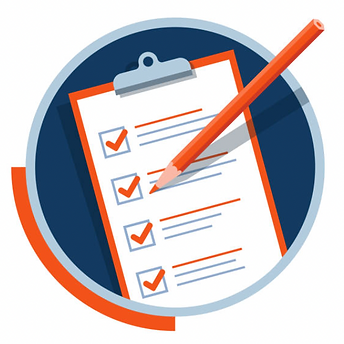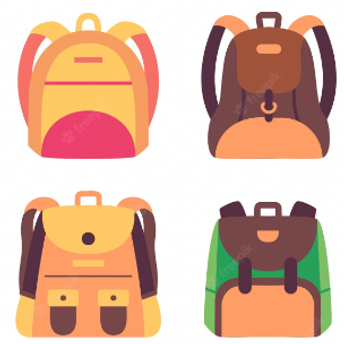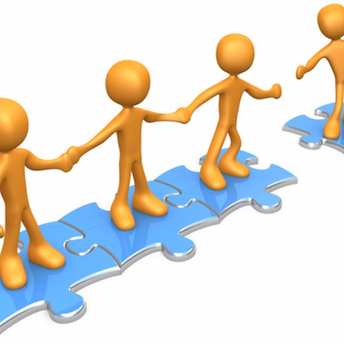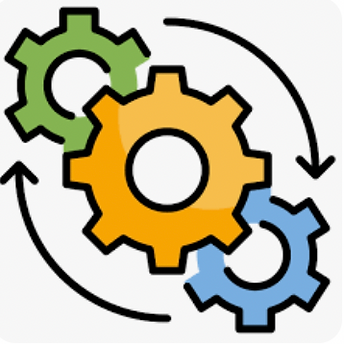Heather Onderick
A strategic, thoughtful and courageous learner and leader.
Leadership Portfolio
Wholehearted, appreciative & community minded...
Standard 1
Mission, Vision & Core Values
In the 2022-23 school year, I led the United School of Tokyo through a review of the school´s mission and vision. This work was building on work completed by a PLC during the 2021-22 school year which revitalized the school´s core values. This work was also aligned with a strategic marketing goal from the strategic plan to rebrand the mission and vision and learn it, live it, breath it through our actions as promoted on the website and social media. To launch the process, I led the teachers and students through a multi-step protocol which had the teachers looking at the school´s core values and identifying which ones they thought that the school embodied most. Later teams worked in triads to continue this work, and eventually agree on three core values. After this, the teams identified verbs and nouns that went with those core values that were things that the school was doing or embodying. With the vision, we researched other schools´ vision statements. From there, we went through two different protocols, one that for adults that did not go so well and was revised for the work with students to draft new vision statements. This work is important because this work starts the school community in having a shared understanding of the mission and vision. It also gives stakeholders shared ownership of the mission and vision. As a leader, it is relevant because it connects back to a core value of mine: community, and a fundamental belief of how learning is more active through constructivist experiences.
Standard 2
Ethics & Professional Norms
In the following link, you will see the agenda we use to lead all our meetings around teaching and learning at the United School of Tokyo. The tool is anchored in placing children at the center of education. It calls upon teams to define or redefine their norms at the beginning of each year to build trust, fairness and foster collaboration. It is a critical tool in documenting the decision making processes, the feelings and experiences of staff members as well as analysis and reflection on teaching practices, student work, and most importantly, common agreements about assessment and instructional practices. As the Director of Teaching and Learning, I have created an agenda like this each year for each grade level team, PLC and divisional team. There are also historical curricular documents that track the short term accomplishments, yearly goals, and progress. All in all, these various documents serve as a helpful reference point to anchor historical thinking and decision-making. I am a detail oriented leader and want to make sure there is ongoing documentation of the conversations we have had, the work we have done and hope to do especially in terms of framing the why for newcomers in the future.
Standard 3
Equity and Cultural Responsiveness
In 2021-22, I worked in conjunction with the school guidance counselor to develop a multi-tier support tiered system to support student behavioral, academic and social emotional needs. In 2022-23, we hired a learning support specialist and 2 full-time ELL instructors to support students, while anchoring the work we did with common assessment criteria and a thorough documentation process. This work was done in order to ensure that each student has equitable access to effective teachers, learning opportunities, academic and social support, and other resources necessary for success. It has been a tremendous labor of love as a leader but our students have been affected tremendously. It is now easier for teachers to evaluate and support student progress around learning targets specified by the assessment criteria, especially our ELL learners, through the implementation of WIDA testing and the WIDA continuums. The learning support side is a work in progress and as a learning leader, the MTSS specialist and I are still fine-tuning what exact assessments will be used to assess specific learning needs. In addition, we are trying to establish norms and agreements around co-teaching and communication between homeroom teachers and support teachers to ensure student success. In leading this long-term project that is still in development, this experience has reiterated the importance of constantly revisiting the work we do in schools especially as we add new sets of expertise and perspectives to our teams.
Standard 4
Curriculum, Instruction & Assessment
The following tool linked in the image is a learning backpack. This tool was used by the middle school teachers during their advisory classes in the first week of school. The backpacks were shared with all the middle school teachers in an effort to promote instructional practice that is consistent with knowledge of child learning and development, effective pedagogy, and the needs of each student. In the first kid talk facilitated by the MTSS team, teachers shared their big takeaways from the learning backpacks around the kids learning needs. This launched into a larger conversation about how to best facilitate learning on whole group, small group and personalized levels for our middle school students.
Another notable accomplishment with regards to this standard, is the vertical articulation curricular overview I have created and worked on with my grade level and subject areas teams. This shows the documentation of stage 1, stage 2 and stage 3 of the understanding by design process vertically from K1-K8 and horizontally across each grade level. I believe this document embodies units with high expectations for student learning which gives clear guidelines around academic standards, and are working towards being culturally responsive. As a leader, I have many takeaways from working on this overview. First, that it is important to note that teachers and teams all work at different paces just like our students, and certain tasks are going to take longer and need more scaffolding depending on whom you are working with. Finally, I can strongly say now that I believe stage one of the UBD cycle should be voluntary. If teachers do not want to do that work, I do not think we should force them. If teachers want to do the work, leaders have a responsibility to harness that energy and enthusiasm and make space and time to work collaboratively with them to design a unit that molds many perspectives together.
Standard 5
Community of Care and Support for Students
In order to promote adult-student, student-peer and school-community relationships and cultivate and reinforce student engagement in school and positive student conduct, I worked with a student think tank group in the middle school to develop monthly house game activities that would challenge students to think differently. The following folder (linked in the image) includes the documentation of the activities used, the point tracking system, the organization of houses including students and teacher leaders. As a leader, I believe in harnessing the voices of the members of the community. The students brainstormed activities at the beginning of the year and throughout the year, the teachers gave feedback and fine-tuned the activities I created based on their awareness of current student learning needs and nurturing positive learning experiences. These house games were important in the 2022-23 school year for me because I was managing two roles: Director of Learning and Middle School principal. House games gave me an opportunity to be with the students in a human way. Because of the diversity of the experiences, it was an opportunity for me to see all the students thrive in a way I was not always able to while trying to manage both roles. As a leader, this year emphasized a priority for me which is to give students some playful and joyful opportunities to thrive in a non-academic and low stakes environment.
Standard 6
Professional Capacity of School Personnel
When I arrived at the United School of Tokyo, our growth and evaluation form was outdated and redundant. It was not clear what research it was grounded in. I knew it was time to update it in order to deliver actionable feedback about instruction and other professional practice through valid, research-anchored systems of supervision and evaluation to support the development of teachers’ and staff members’ knowledge, skills, and practice. I used Charlotte Danielson´s Framework for Teaching to rethink the benchmarks we were using to assess our instructional staffs´ teaching, learning and professional practices. As a leader this tool allows me to give constructive feedback to teachers through cognitive coaching conversations. Through the conversations, the teachers have an opportunity to give feedback to the senior leadership team and promote their own ideas about what they would like to see or do in the community. This tool has been a thoughtful launchpad for some faculty members to be heard more, creating the space for more open dialogues. My current role at United School of Tokyo has been the first time I have had to complete teacher and growth evaluation. Whenever I enter the classroom formally or informally, I follow up with an email and an invitation to a follow up conversation noting any celebrations, observations, wonderings, and soft suggestions. Appreciative feedback is something we crave as humans and my teachers have given me positive feedback and responses to this attention and approach.
Standard 7
Professional Community for Teachers & Staff
In the folder linked in the image on the left, you will find the documentation (agendas, action research, research, etc) of our 2022-23 PLC groups. I implemented a PLC structure in 2021-22 that addressed needs in our school. The structure required that all faculty members attend a monthly meeting participate in one of the four PLC groups and complete action research through the year. The first year was challenging in that only two out of the four groups walked away with artifacts. After a collaborative examination of practice, collegial feedback and collective learning, I shifted the PLC practices for the 2022-23 school year. There was a bigger emphasis put on action research and developing and supporting productive, caring and trusting working relationships among leaders, faculty and staff to promote professional capacity and the improvement of practice. As a leader leading the PLC groups, I learned the importance of collective efficacy and learning about something together, while also providing voice and choice in the pathway to practicing and demonstrating understanding of that concept. Our structure for PLCS at the United School of Tokyo works as a place to research, study and develop upcoming objectives in the strategic plan or educational trends. In the future, I would like to incorporate personal action research projects into the third or fourth year of growth and evaluation cycle in lieu of formal observations.
Standard 8
Meaningful Engagement of Family and Community
The United School of Tokyo´s Parent PD Series was started with the intention to create and sustain positive, collaborative, and productive relationships with families and the community for the benefit of students. In 2021-22, I created a number of topics based on the initiatives for the year. The guidance counselor and I presented the majority of the topics in the 2021-22 school year. At the end of the school year, I talked to teachers, parents and the senior leadership team of some other potential topics for the 2022-23 school year. We surveyed the parents on their topics of interest. In August 2022-23, I narrowed down the topics to approximately one PD topic per month. I then thought about which topics I could present and which topics would be better left to the experts. Once I confirmed with the faculty who was presenting what and when, I sent out another form to the parents to determine preferred attendance times, preferred days, and topics that may be of interest to them. I used the information in this form throughout the year to send invitations to the people who responded and posted the meeting details on the whole school calendar. Having said, that I still need to work on publicizing the PD sessions better through other channels such as our Instagram platform and Edsby (Learning Management System) Newsriver. An additional purpose of these PD sessions is for the school community to be able to partner with families to support student learning out of school. As a leader and parent, these sessions have been a helpful tool in understanding what our parents need more of and want more of in terms of their childrens´ educational experiences.
Standard 9
Operations and Management
The United School of Tokyo´s strategic plan was made in order to manage fiscal, physical and other resources to support curricular, instruction and assessment, student learning community; professional capacity and community; and family and community engagement. It was developed by the Senior Leadership team in the summer of 2022, after I had initiated the discussion because of upcoming accreditation work and a graduate level class on Operations and Financial strategies. Going through the process of anchoring our goals in supporting data and considering what would be our evidence of success and what impact that would have on the community was an extremely empowering process and I do wonder how the entire school community could be involved more in the future. One of my largest takeaways was that just like our data digs in teaching and learning, we also need to develop and maintain data and communication systems to deliver actionable information for classroom and school improvement when it comes to strategic planning.
Standard 10
School Improvement
In the link on the left, you will see an introductory presentation on Generative Ai and ChatGPT. This will be used as a provocation for engaging others in an ongoing process of evidence-based inquiry, learning, planning, implementation and evaluation for continuous school and classroom improvement. This will tentatively happen in the 2023-24 school year in the middle school division as outlined in the following artifact: ChatGPT Innovative Practices Plan (p. 22-26). By using these tools as a leader, I am trying to make school more effective for each middle school student and teacher through providing research and direct teaching about the tool, opportunities to pilot and practice tools, documentation through the creation of a toolkit and term based reflections by students and teachers throughout the school year. Through this work it is my hope that the faculty can assess the value and applicability of emerging educational trends and the findings of research for the school and its improvement. While doing the research and planning of this proposal, I was reminded of the importance of personal inquiry, the importance of using a variety of resources, and the responsibility we have as educators to approach educational trends with an open mind and potential for possibility.









